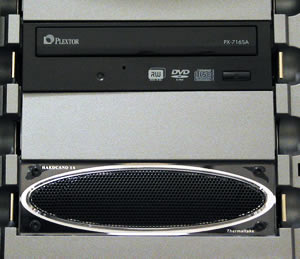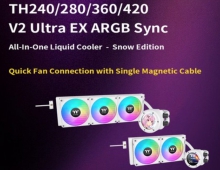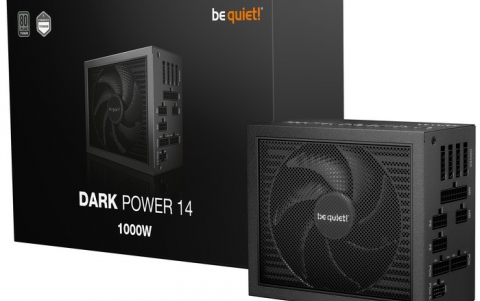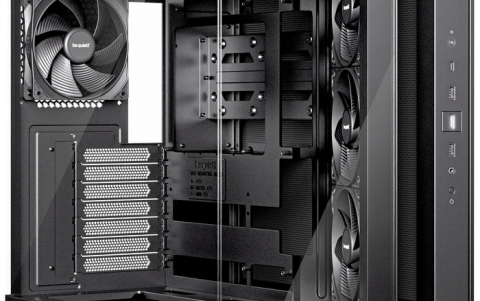Thermaltake Hardcano 14
2. Installation
Before proceeding with the installation procedure, we should add that the Hardcano has another advantage. It essentially adds one more slot for a hard disk on your case, since the case fits in the wide, 5.25" bay where normally your CD and DVD drives go. This was handy in our case where we only had three slots for hard drives and all were occupied. Moreover, all those hard disks so close to one another, amounts to temperature buildup.

Begin by installing the hard disk inside the Hardcano 14's case, a fairly simple task. First, un-screw the two screws on the right side of the case and open the shell (see photos below).
 |
 |
 |
|
 |
|
Apply the two thermal pads to the "floor" and "ceiling" of the case (i.e. the top and base of the inside of the shell as shown in the photos below), in the position where the hard disk will be situated.

Peel off the plastic transparent protective strips from each pad.
 |
There are four metallic standoffs on the base of the case which line up with the four mounting holes on the bottom of the hard drive (see photos below). If for some reason, when you close the case, the top of the case does not contact the top of the hard drive, there are rubber pads that can be inserted on the standoffs to raise the hard drive. When properly installed, the top of the hard drive (i.e. the surface with the metal cover and not that with the pcb) should press firmly against the thermal pad on the cover of the Hardcano 14.
 |
 |
Once you have done this, close the shell and replace the two side screws. The hard disk that has just been installed in the Hardcano, contacts only the upper thermal pad for heat dissipation. It does not contact and should not contact the one under the hard drive, on the base of the case, as it can cause damage to the hard disk's pcb. We are not sure why this pad needs to be installed as it doesn't play any role, however, after speaking with Thermaltake, they advised us that it needs to be installed.
Install the Hardcano 14 in your PC case in an empty 5.25" drive bay slot. You then need to provide power to the fan, connect the IDE/SATA.SCSI cable and power to the hard disk.
 |
 |
The result is quite impressive...

...especially when the Hardcano begins operation.






















